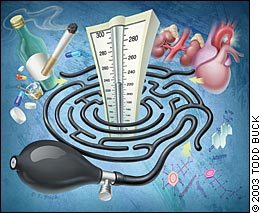
Am Fam Physician. 2003;67(1):14

On page 77 of this issue, you'll find the first in a new series of short updates on complementary and alternative medicine (CAM) in AFP. The lead article, “Echinacea,” by Benjamin Kligler, M.D., M.P.H., Albert Einstein College of Medicine, New York, N.Y., takes a look at the current uses of echinacea and the supporting evidence, and explores adverse effects and interactions.
An accompanying editorial on page 36, titled “Complementary and Alternative Medicine: Examining the Evidence,” by Sumi M. Sexton, M.D., Georgetown University Medical Center, Washington, D.C., provides background on the series. Dr. Sexton, one of AFP's assistant medical editors, developed the concept and format and has solicited articles for the series.
As Dr. Sexton explains in her editorial, the purpose of the series is not to encourage physicians to prescribe complementary and alternative treatments, but to summarize and label the strength of evidence behind various alternative therapies to help physicians knowledgeably communicate with their patients on this subject. Dr. Sexton points out that 21 to 50 percent of patients making office visits to family physicians are currently using alternative therapies or have done so in the past, and nearly one half of patients may fail to disclose the use of CAM treatments to their physician.
Herbal remedies and supplements, chiropractic techniques, and massage therapy are among the most commonly used CAM modalities. The CAM series in AFP will start out with the most frequently prescribed and well-researched herbal remedies and supplements, and Dr. Sexton has chosen the echinacea article by Dr. Kligler to kick off the series. According to Dr. Kligler, echinacea is one of the top-three selling herbs as a result of its current popular use as a treatment for upper respiratory infection. How many of your patients are using echinacea this winter?
While data are inconclusive and new studies are under way, it appears that echinacea preparations may have a modest positive effect on the duration and severity of URIs but no efficacy as prophylaxis against URIs. Nevertheless, the adverse effects seem rare, and the potential for important drug-herb interactions appears limited. Minor side effects include an upset stomach, nausea, and dizziness. More severe symptoms include worsening of asthma symptoms and allergic symptoms, such as rash, swelling, and difficulty breathing. A patient information handout accompanying Dr. Kligler's article helps explain these effects.
AFP's brief updates are intended to extract the most important data from the widely available information on CAM in textbooks, journals, newsletters, and Web sites. Topics in upcoming issues include saw palmetto, valerian root, and black cohosh.